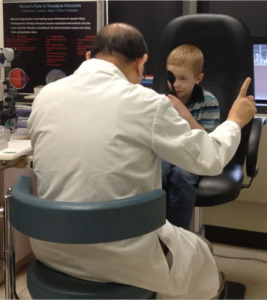What is Cystinosis?
 Cystinosis is a rare metabolic disease that affects approximately 500 people in the United States (mostly children), and about 2,000 people worldwide. This recessive genetic disease causes the amino acid “cystine” to accumulate in the cells of the body. Over time, the cystine damages various organs including the kidneys, liver, muscles, white blood cells, eyes, and central nervous system. Other complications include muscle wasting, growth loss, difficulty swallowing, and developmental delays. Termed an “orphan disease,” Cystinosis is a disorder which has not been “adopted” by the pharmaceutical industry because it provides little financial incentive for the private sector to make and market new medications to treat it or prevent it. Although there is a medicine that prolongs the lives of cystinosis sufferers, there is no cure. Cystagon, the powerful medication used to treat cystinosis, must be consumed every six hours. But the medicine’s severe side effects and demanding dosing schedule, for which parents must awaken children nightly from their sleep, often results in poor compliance. Eye drops are available to stop the painful accumulation of cystine crystals on the corneas but they must be refrigerated and taken every waken hour. Researchers at the University of California at San Diego developed a slow-release medication to enable cystinosis sufferers to take the medicine every twelve hours instead of every six hours. Raptor Pharmaceutical’s adopted the new drug and has just completed the Phase 3 clinical trial. We hope that the new medication will be approved by the FDA in 2012.
Cystinosis is a rare metabolic disease that affects approximately 500 people in the United States (mostly children), and about 2,000 people worldwide. This recessive genetic disease causes the amino acid “cystine” to accumulate in the cells of the body. Over time, the cystine damages various organs including the kidneys, liver, muscles, white blood cells, eyes, and central nervous system. Other complications include muscle wasting, growth loss, difficulty swallowing, and developmental delays. Termed an “orphan disease,” Cystinosis is a disorder which has not been “adopted” by the pharmaceutical industry because it provides little financial incentive for the private sector to make and market new medications to treat it or prevent it. Although there is a medicine that prolongs the lives of cystinosis sufferers, there is no cure. Cystagon, the powerful medication used to treat cystinosis, must be consumed every six hours. But the medicine’s severe side effects and demanding dosing schedule, for which parents must awaken children nightly from their sleep, often results in poor compliance. Eye drops are available to stop the painful accumulation of cystine crystals on the corneas but they must be refrigerated and taken every waken hour. Researchers at the University of California at San Diego developed a slow-release medication to enable cystinosis sufferers to take the medicine every twelve hours instead of every six hours. Raptor Pharmaceutical’s adopted the new drug and has just completed the Phase 3 clinical trial. We hope that the new medication will be approved by the FDA in 2012.
Children with Cystinosis generally appear normal during the first 9-10 months of life. By one year of age, symptoms occur including excessive thirst and urination, failure to thrive, slow growth, metabolic acidosis and other chemical and renal tubular abnormalities. Children often appear pale and thin and have short stature. The abnormally high loss of phosphorous in the urine leads to rickets. After one year of age, cystine crystals appear in the cornea and cause a severe sensitivity to light (photophobia). In time, patients can develop problems such as hypothyroidism, severe muscle weakness and central nervous system complications. These children have normal intelligence, but have an unusual defect in short-term visual memory. Many have poor GI motility. Cystagon TM causes hyper secretion of gastric acid, resulting in gastric distress.
Treatment
 Without specific treatment, children with Cystinosis progress to end-stage kidney failure by an average age of nine years. In the past, this meant death. Now these patients can receive kidney dialysis or transplantation. However, even with successful treatment, these children can go on to develop abnormalities in other organs and often experience muscle wasting, growth loss, difficulty swallowing, and developmental delays.
Without specific treatment, children with Cystinosis progress to end-stage kidney failure by an average age of nine years. In the past, this meant death. Now these patients can receive kidney dialysis or transplantation. However, even with successful treatment, these children can go on to develop abnormalities in other organs and often experience muscle wasting, growth loss, difficulty swallowing, and developmental delays.
The only treatment for Cystinosis is cysteamine. It is the only drug that slows the progression of the disease by removing the cystine from the cells. In 1994, the new product Cystagon TM was made available in capsule form however it tastes and smells horribly and must be taken every six hours, every day, without fail. Although this has led to a much better future for children and young adults with Cystinosis, Cystagon TM is very hard on their bodies and is not a cure. In addition to Cystagon TM suffers have to take 4 – 5 other medications to control the side effects of Cystinosis. Due to the rigorous 6 hour medication schedule the children always feel the way you or I would right before we “bonk” or hit the wall. Dehydration is always a concern.
